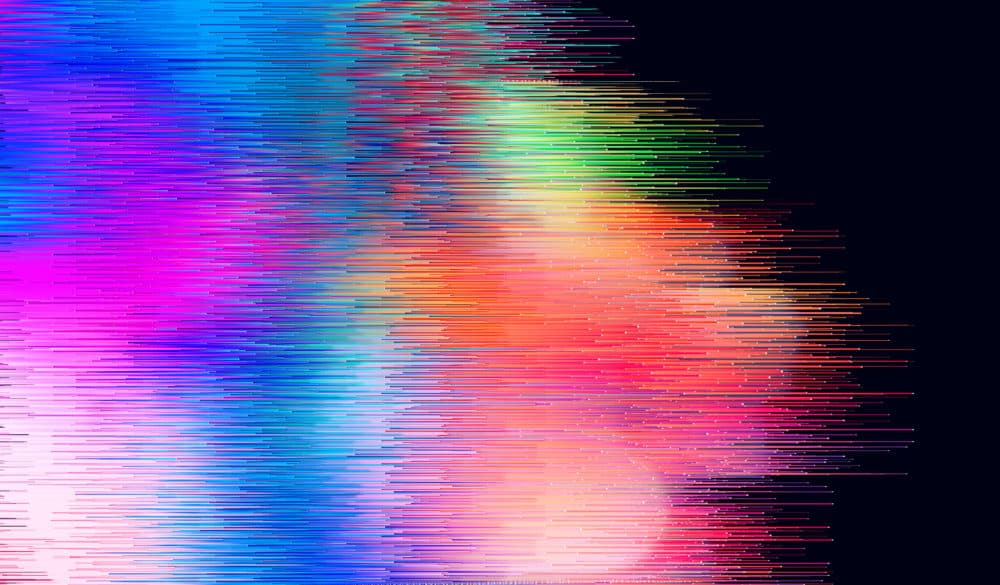Advertisement
Commentary
'The Phantom Hum': My Tinnitus Is Real. It's Also A Metaphor For Our Time

Tonight, after vacillating between Country Campfire and Crackling Fireplace, I veer off in an entirely new direction and decide that I will fall asleep to the sound of Rain on Trees. Of the dozen or so rain variations — Heavy Rain, Light Rain, City Rain, Distant Thunder, Rain on Roof, Driving in the Rain, Rain on Umbrella, Ice Storm — Rain on Trees is the most nuanced. I picture the digitally recorded drops as big and fat, bombarding stiff broad leaves with a sound somewhere between a burst of static and a splat.
Since developing tinnitus about four years ago — in my case, a high-pitched hum in my right ear — I’ve come to rely on listening to music, stories, or nature sounds culled from my many apps. None of them truly mask the nighttime whine, but they give my grappling hook of a brain some other sound into which it can sink its spikes. Do you hear it? That hum is here now, infiltrating my words with its sneakily savage ssssss.
Of course, it could be worse. While most tinnitus suffers hear ringing or buzzing or whooshing, some hear other, highly specific sounds. I can’t imagine trying to adapt to a continuous aural assault of heavy traffic or vacuum cleaners.
Some people prefer industrial noise or natural cacophony. Scrolling through my Deep Sleep app I can find Lawn Mower, Clothes Dryer, Typewriter, Rotary Blade Fan, even, God help me, Stock Car Racing. These are not for me, not just because these sounds feel like sand paper inside my scalp, but because they don’t take me anywhere I want to be.
But Distant Pounding Surf does. I hear the recurring low rumble culminating in the gush of water against rocks and see my sun-buttered daughters of 30 years ago plopping their feet into the left-behind puddles on the sand.
When the volume is high enough to clearly hear the patter of Rain on Tent, I can burrow into the backside of the same man with whom I spent buggy, hungry, fresh-caught-fishless nights on Lake Huron’s Georgian Bay. Between that man and the still-beaming flashlight and down-filled sleeping bag, I had all I would ever need.
Perhaps it’s not about where these sounds take me, but to when.
Back then I didn’t — couldn’t — imagine that I would become a pillow fusser, a constant thermostat adjuster, a Medicare recipient with an age-related condition shared by 20% of the general population and now, by growing numbers of COVID-19 patients and long-haulers.
Until recently, the conventional wisdom was that tinnitus was caused by small breaks in the cilia of the inner ear. When those delicate, waving little hair cells are buffeted by noise and age, they bend and fracture, leaking random electrical signals that our oh-so alert brains interpret as sound. But more recently, researchers have found that “chronic tinnitus is associated with changes in certain networks in the brain, and … those changes cause the brain to stay more at attention and less at rest.”
I was diagnosed a-year-and-a-half ago. But at its onset and for several months, I had attributed the relentless hum I was hearing to the power lines outside our bedroom window. But now I realize that what keeps me up at night isn’t an actual, externally generated noise. It’s hyper-vigilance, a condition that the combination of Twitter and Trump generated and the pandemic made worse.
Advertisement
Tinnitus is real, but it’s also a metaphor for the historical period we are staggering through
Tinnitus is real, but it’s also a metaphor for the historical period we are staggering through. If this era had a sound — beyond that of talking heads — it would be a screeching fanbelt, a semi-automatic weapon, a car alarm in the middle of the night and during every other hour. It would be a leaf blower run by a malicious neighbor, even when there are no leaves on the ground.
No wonder I turn to Thunder Storm, Hail or Wind in Cave. These are the sounds of natural forces that menace but reassure because they’re out there, and I’m warm and safe in here.
They offer a false but necessary distraction. But I don’t want to have to dampen the phantom hum of my own brain with a manufactured wall of sampled birdsongs and waves, breezes and chimes. I want my aging, delicate cilia to wave out the self-generated din and usher in what is real but not frightening.
I want to sleep and wake in a world where a more porous boundary between out there and in here will produce lovelier sounds.
This segment aired on July 16, 2021.
